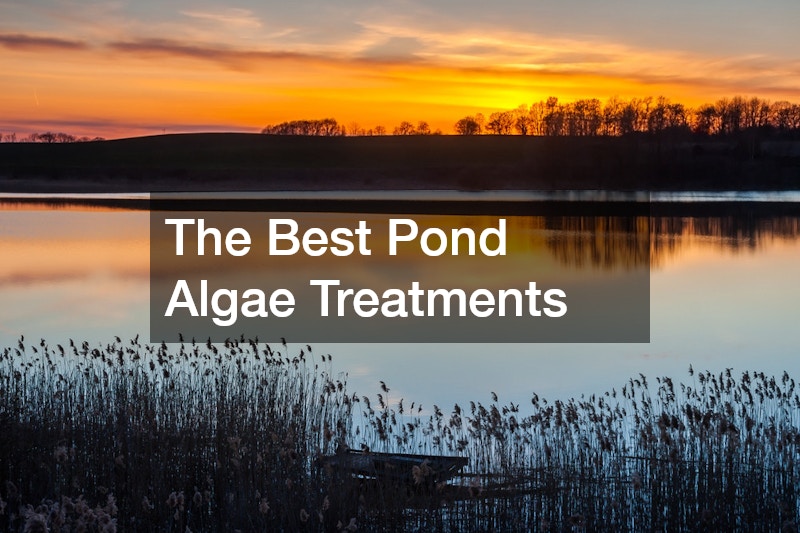Understanding pond algae treatments and their impact on ecosystems is crucial for pond owners. Algae can both enhance and disrupt the delicate balance of these habitats. This article explores the best treatments to manage and prevent excessive algae growth, ensuring a healthy pond environment.
What Causes Algae to Grow in Ponds?
Factors Contributing to Algae Blooms
Algae growth in ponds is largely influenced by nutrient availability, particularly nitrogen and phosphorus, which serve as food for these microorganisms. Excessive sunlight exposure also accelerates algae growth, as it catalyzes the photosynthesis process. Additionally, water temperature plays a vital role, with warmer conditions often leading to more prolific algae blooms.
Natural processes, such as decomposition of organic matter, contribute to nutrient enrichment, making ponds susceptible to algae. Human activities, like the use of fertilizers near water bodies, further exacerbate the problem by introducing excess nutrients. Poor water circulation can create stagnation, providing an ideal environment for algae to thrive.
The balance between algae growth and control is delicate, where too much growth can diminish oxygen levels and harm aquatic life. The presence of certain fish and aquatic plants can sometimes naturally limit algae growth, but in cases of imbalance, intervention may be necessary. Understanding these factors is essential for effective algae management in ponds.
How Can You Prevent Algae Growth?
Proactive Measures for Algae Control
Prevention is the key to effective algae management, and maintaining water quality is a fundamental step. Regular monitoring and adjustment of pH and nutrient levels help to create an unattractive environment for algae. Introducing aeration systems can enhance oxygen levels and reduce stagnation, which limits algae proliferation.
Managing nutrient levels involves controlling the sources of phosphorous and nitrogen, which often means reducing the runoff from fertilizers and organic waste. Installing buffer strips or using slow-release fertilizer options can significantly minimize nutrient infusion into pond water. Implementing water plants that compete with algae for nutrients can serve as a natural preventive measure.
Using natural predators, such as specific fish species that consume algae, can complement other preventive measures. Regular pond maintenance, including removing decaying organic matter and debris, helps in controlling nutrient levels. Creating a balanced ecosystem where natural checks and balances exist can be an effective long-term solution.
What Are the Most Effective Chemical Treatments?
Overview of Algaecides
Chemical treatments such as algaecides can provide rapid results in eliminating algae blooms. These products are formulated to target algae cells, disrupting their functions, resulting in their destruction. However, careful application is necessary to avoid harming non-target aquatic organisms.
The method of application for algaecides typically involves directly adding the product to the water, ensuring even distribution for optimal effectiveness. It’s important to follow manufacturer guidelines to prevent any adverse effects on the pond’s ecosystem. Continuous monitoring post-application is crucial to ensure the treatment has the desired effect without collateral damage.
Potential side effects of algaecide usage can include toxicity to fish and beneficial aquatic plants, so it’s essential to select products that are specifically designed for the type of pond environment. Alternatives to copper-based algaecides are available for more sensitive environments. Effective chemical treatment requires a balance between efficacy and environmental safety.
Are There Natural Alternatives to Algaecides?
Eco-friendly Algae Management Solutions
For those seeking environmentally friendly methods, using barley straw is a popular natural alternative. When decomposed, barley straw releases compounds that inhibit algae growth. This approach is slower but safer for the ecosystem and effective in maintaining long-term algae control.
Beneficial bacteria can also be introduced to ponds to compete with algae for resources, reducing algae populations over time. These bacteria help to break down organic matter and improve overall water quality. The integration of such biological controls offers a sustainable approach to algae management without harming aquatic life.
Plant-based solutions, such as introducing submerged and emergent plants, can further reduce algae by blocking sunlight and utilizing available nutrients. Ecosystem balance is achieved through diversity, providing a natural barrier to algae growth. Employing natural methods requires patience but often yields substantial long-term benefits.
How to Maintain a Healthy Pond Ecosystem Long-term?
Integrated Pond Management Strategies
A long-term approach to pond management involves implementing a combination of preventive and remedial strategies. Regular monitoring of water chemistry helps in early detection of imbalances that could lead to algae blooms. Maintaining a routine schedule for pond maintenance and cleanup ensures robust water quality.
Integrated management includes using mechanical tools like skimmers to remove floating algae, alongside biological and chemical controls. Balancing the different types of methods ensures a resilient ecosystem that can withstand potential algae growth triggers. Education and awareness about sustainable pond practices are vital for long-term success.
Ensuring a healthy pond ecosystem is an ongoing process that involves adapting to changes in the environment and implementing effective strategies. Collaboration with pond care experts can provide tailored solutions specific to individual ponds. By maintaining a balance of flora and fauna, ponds can remain vibrant and less prone to problematic algae outbreaks.
Conclusion
Effective pond algae management requires a combination of understanding algae growth factors, preventive measures, treatment options, and ongoing maintenance. By implementing a comprehensive strategy, pond owners can ensure their ponds remain healthy, clear, and vibrant.
.

